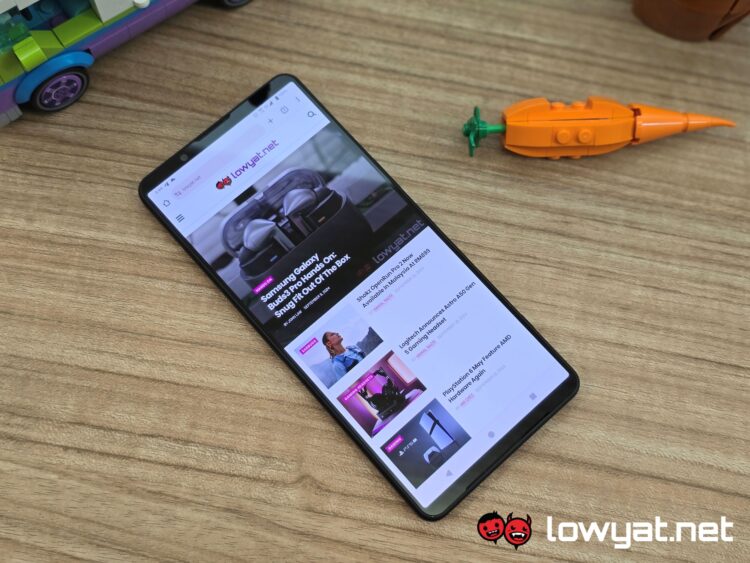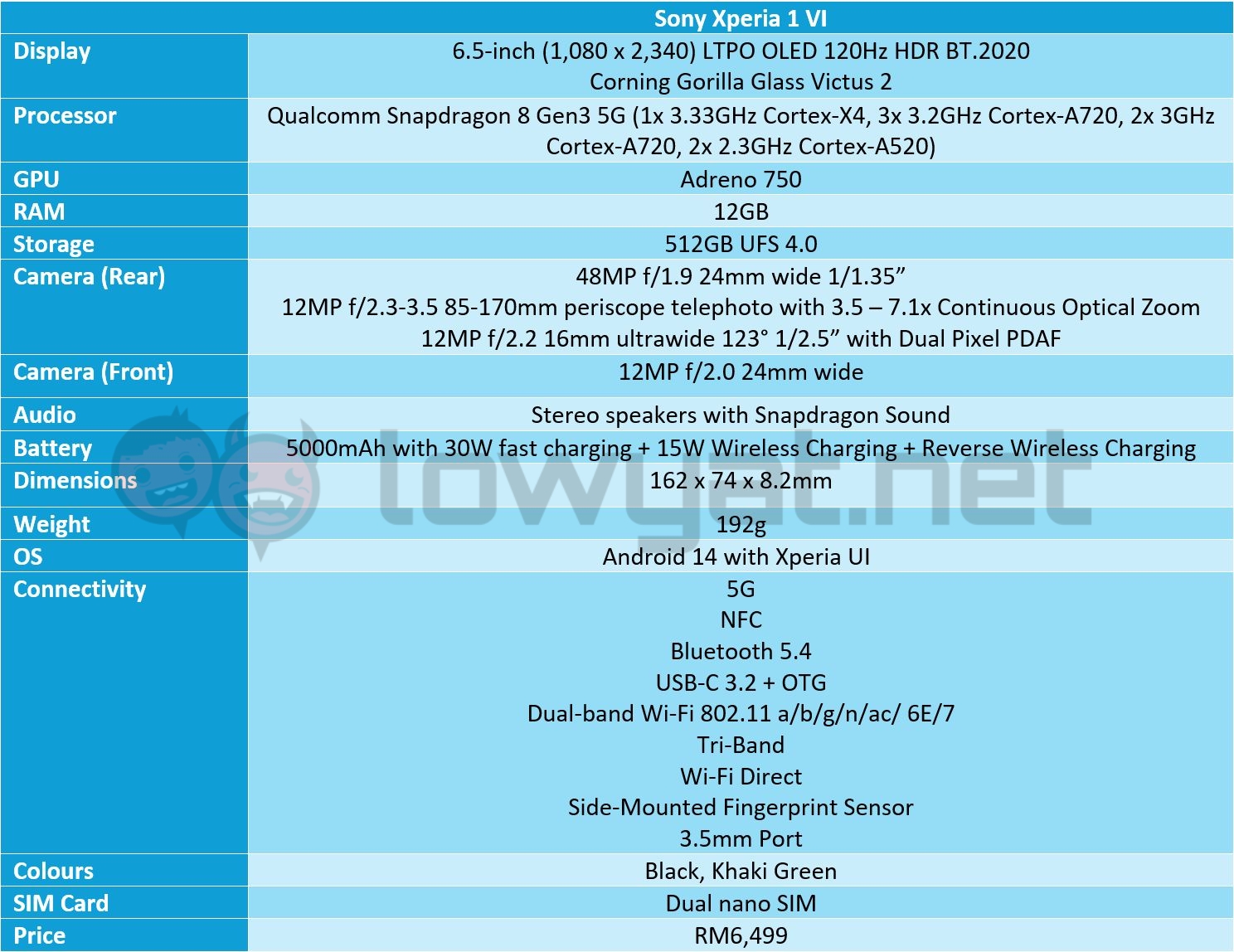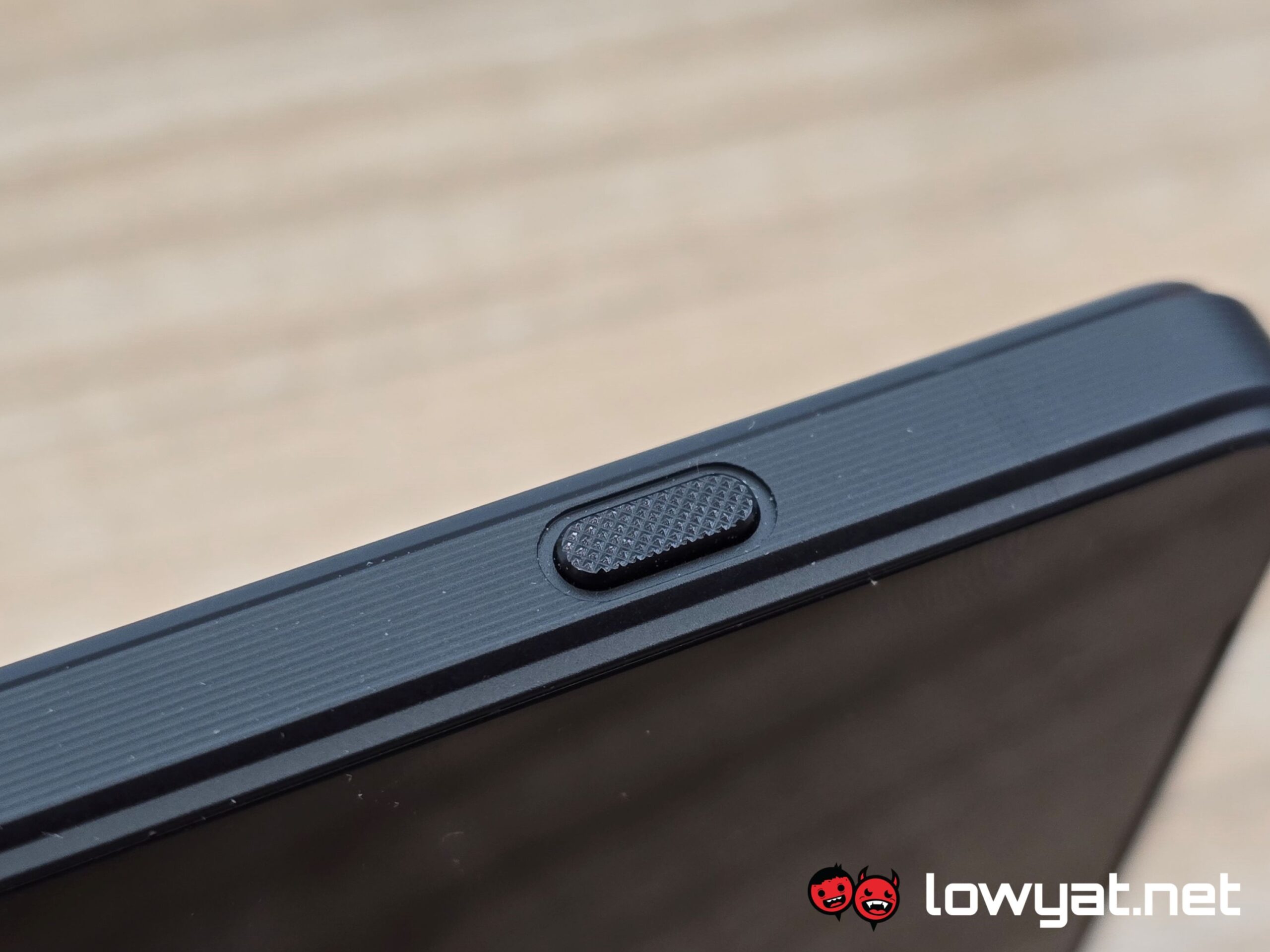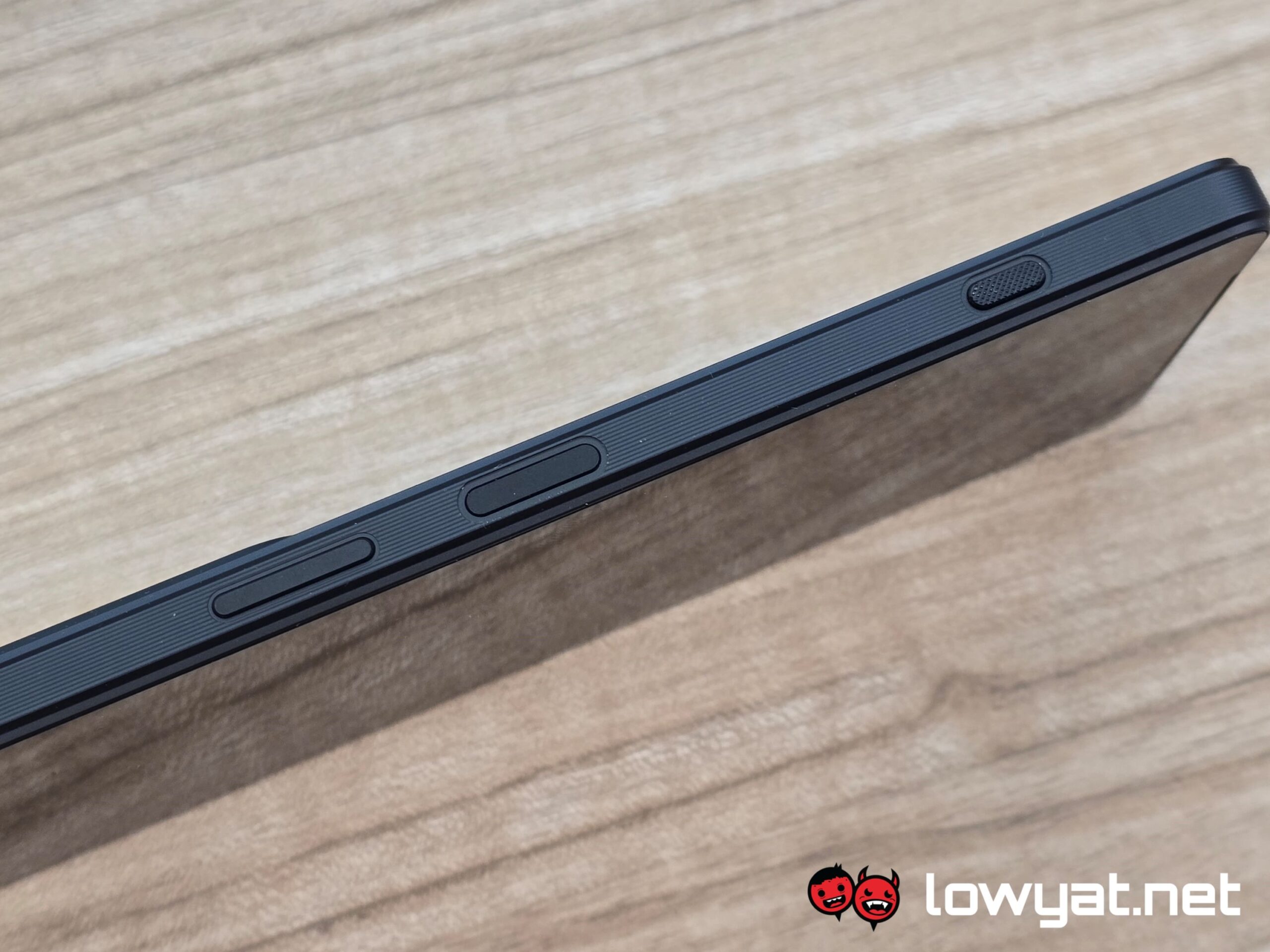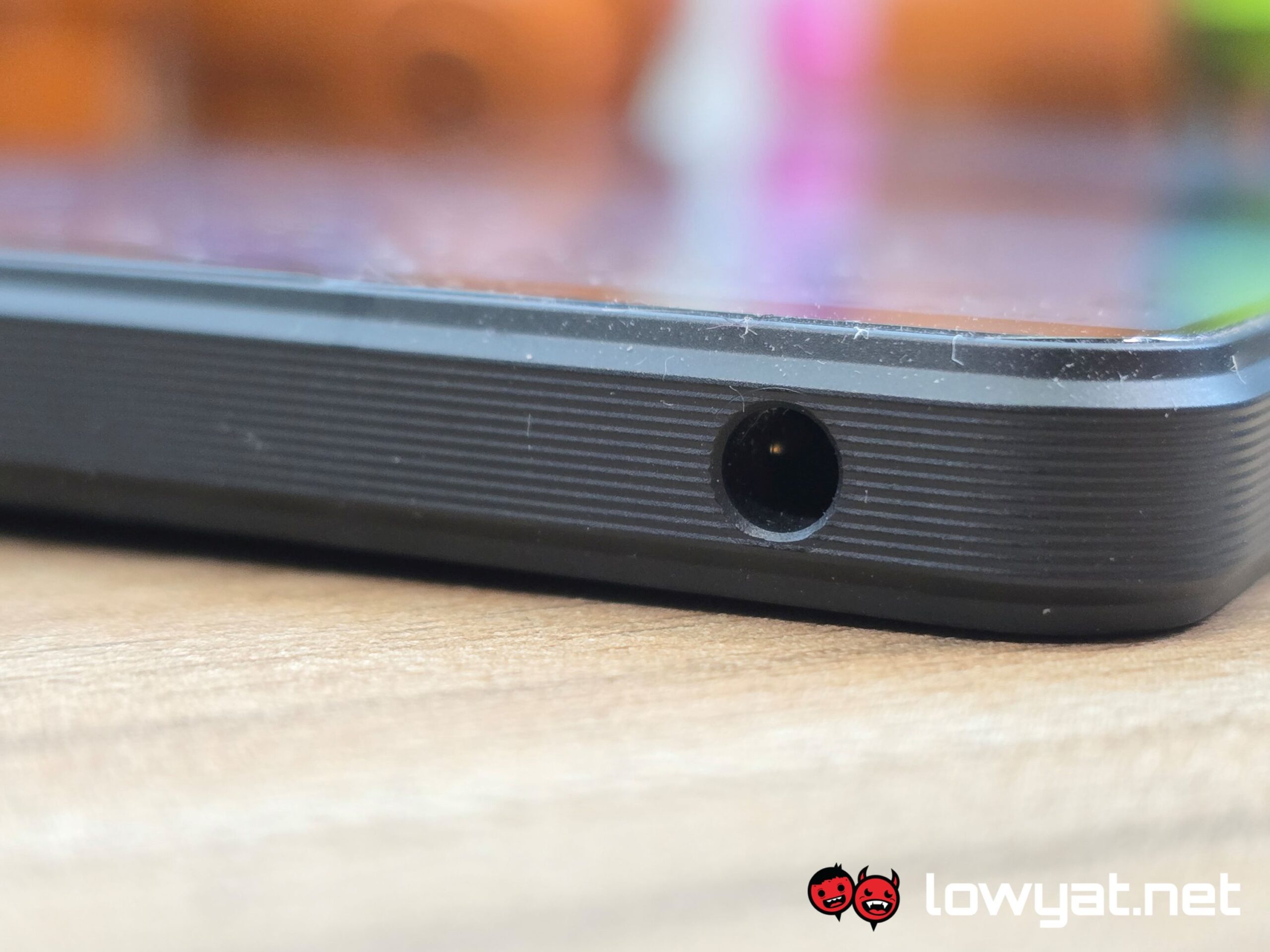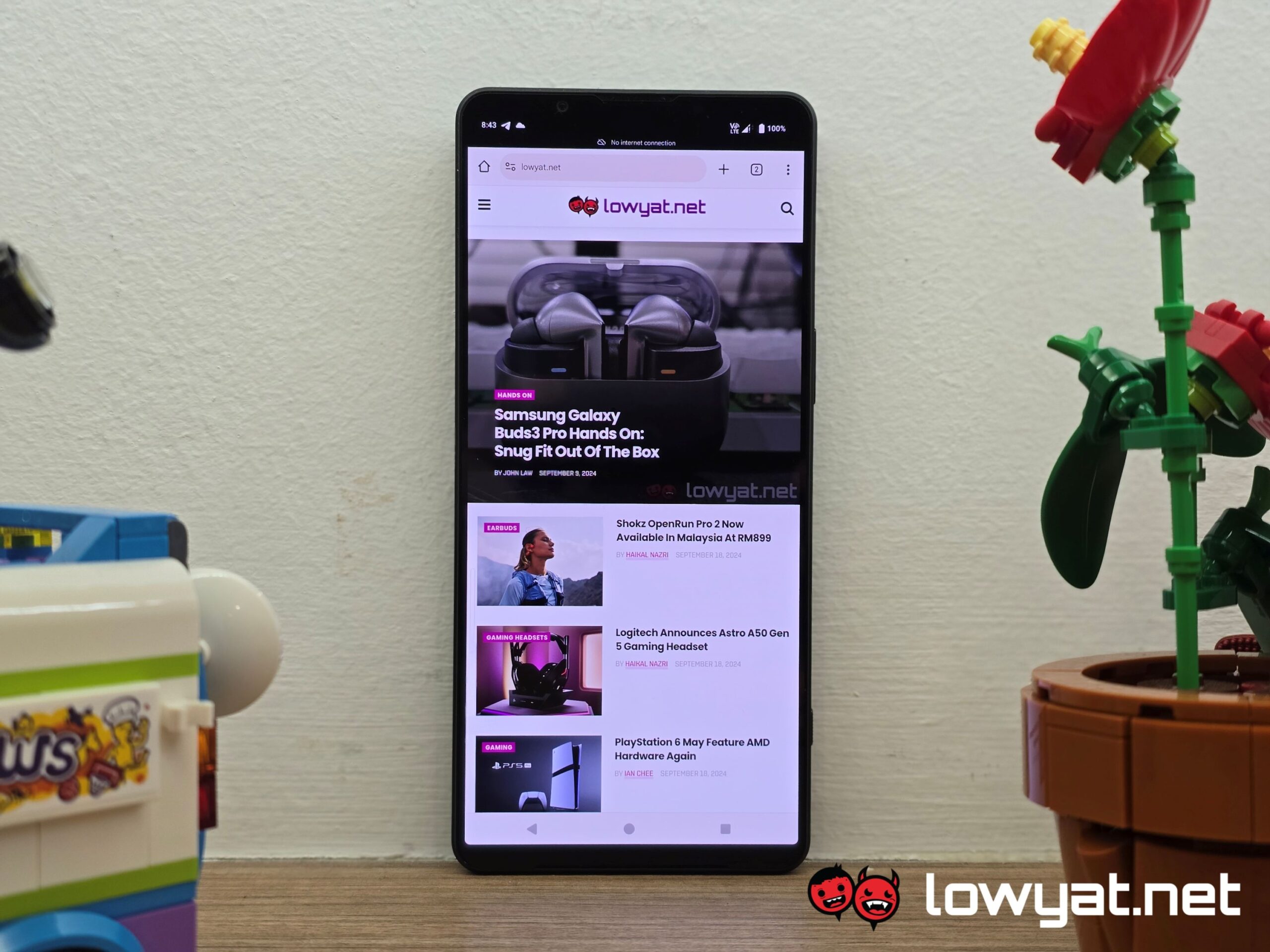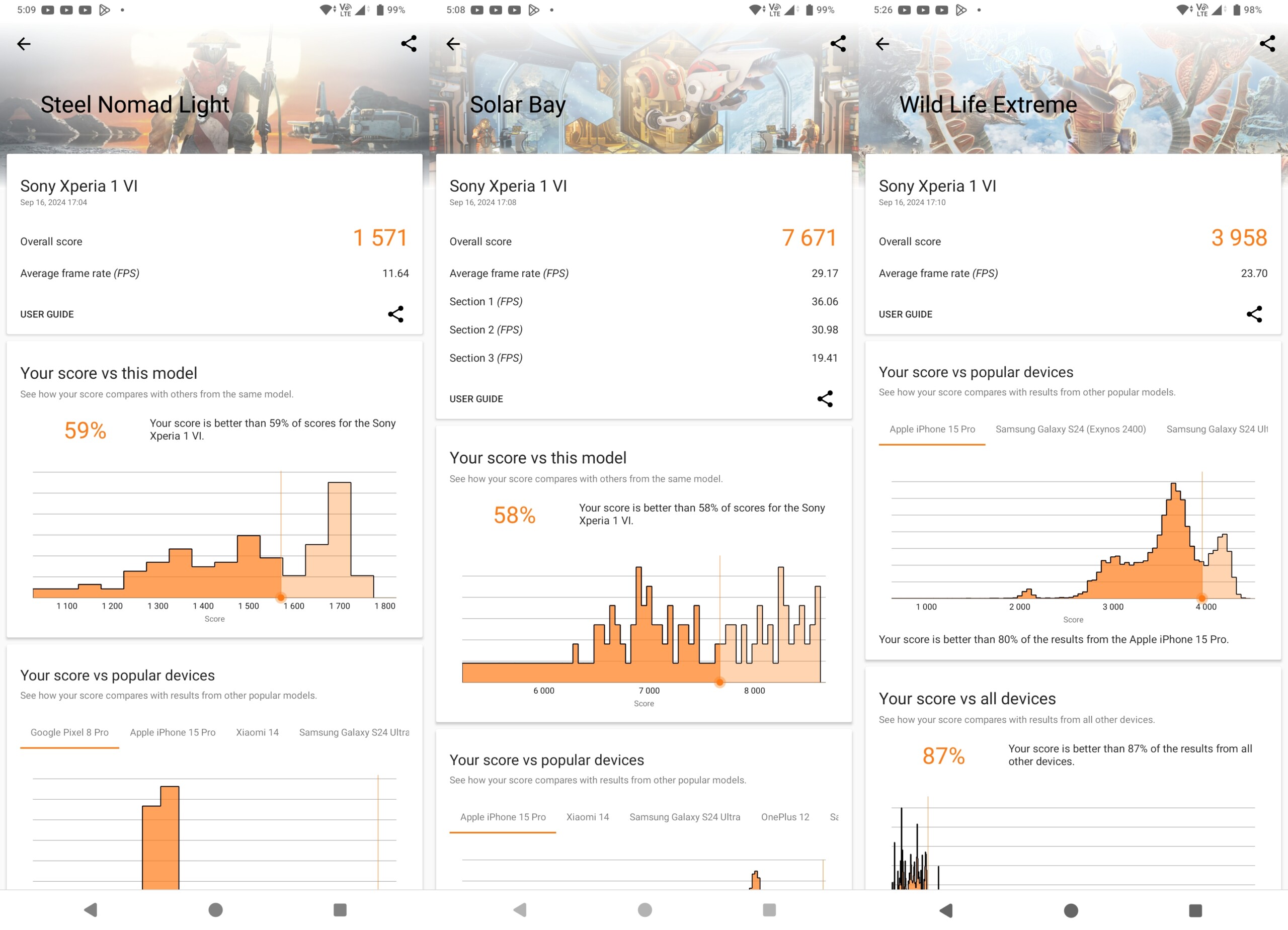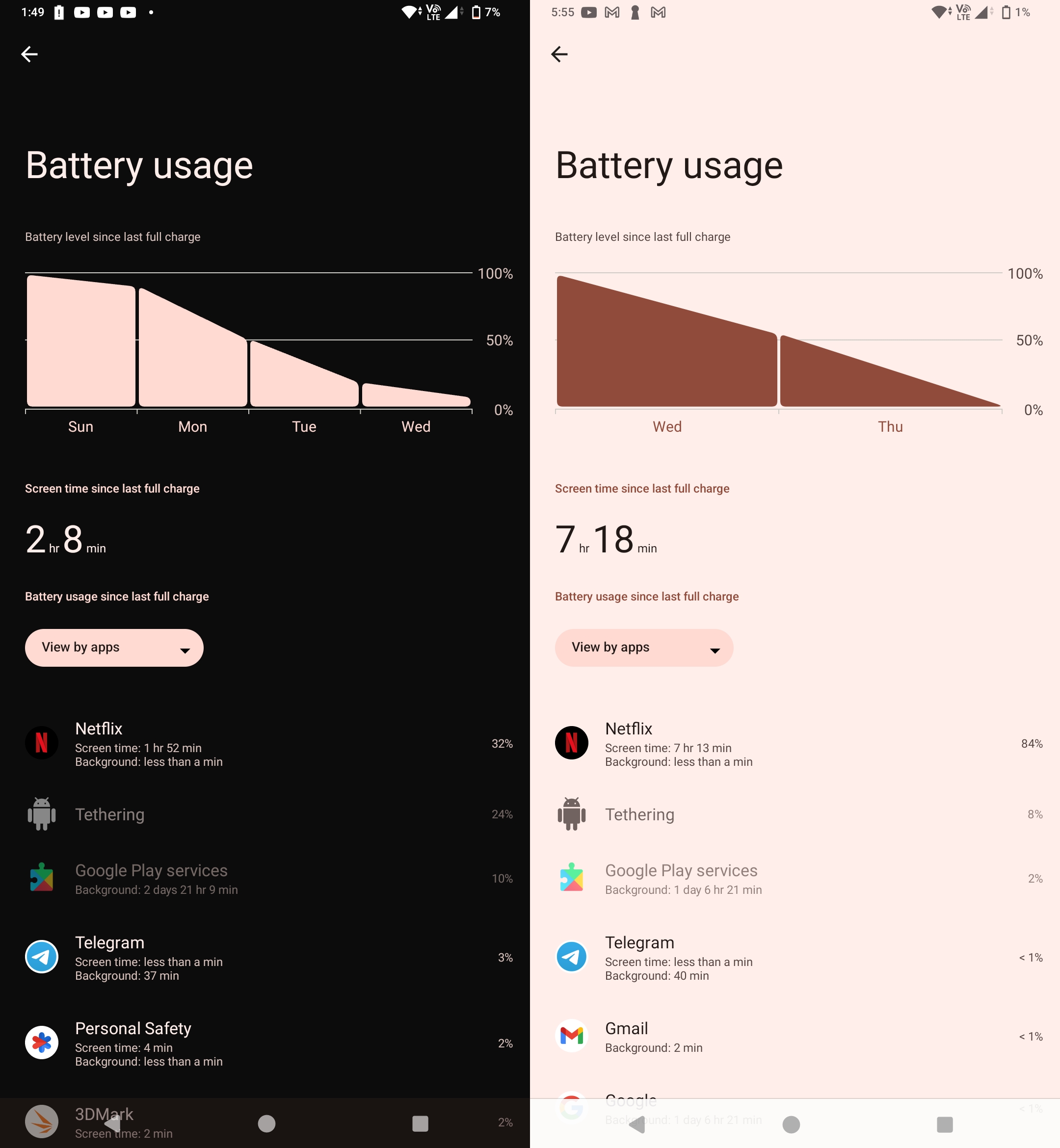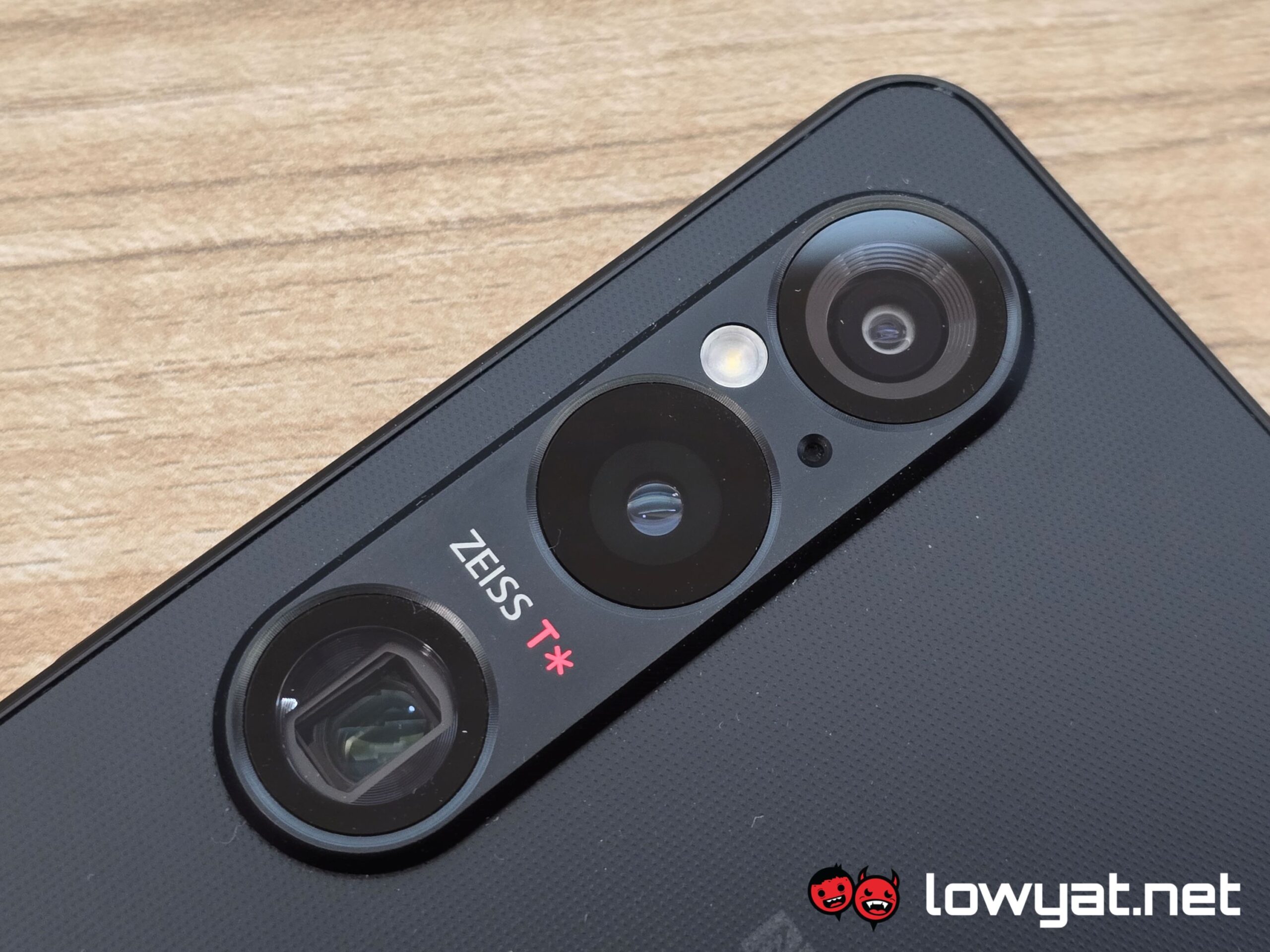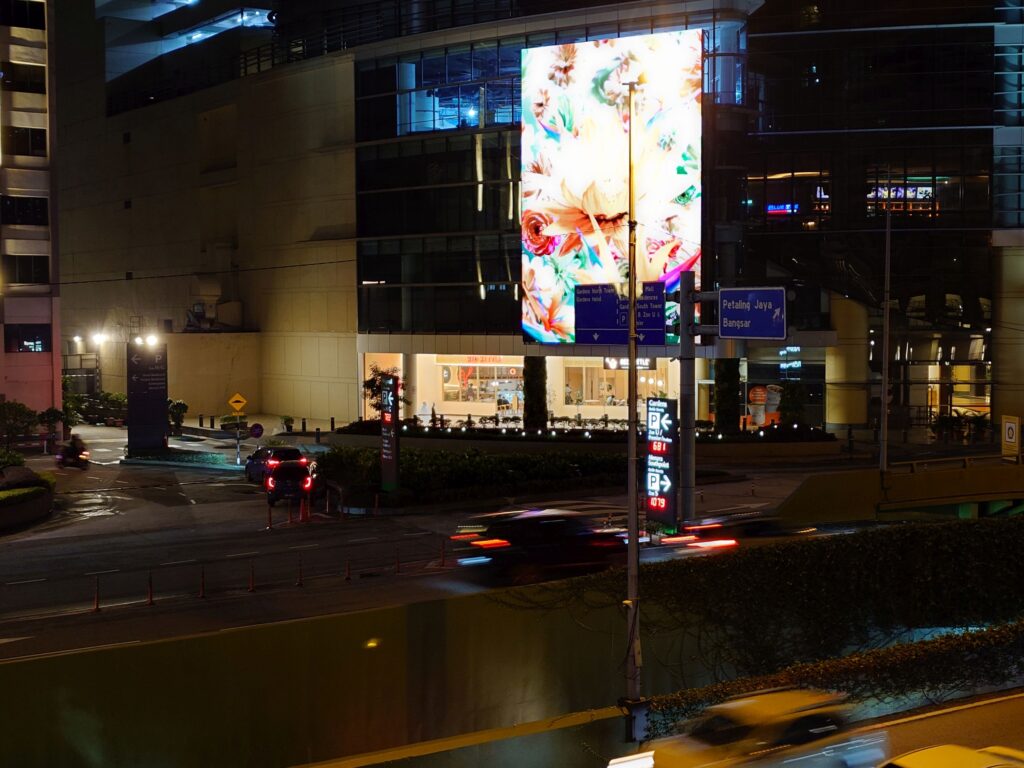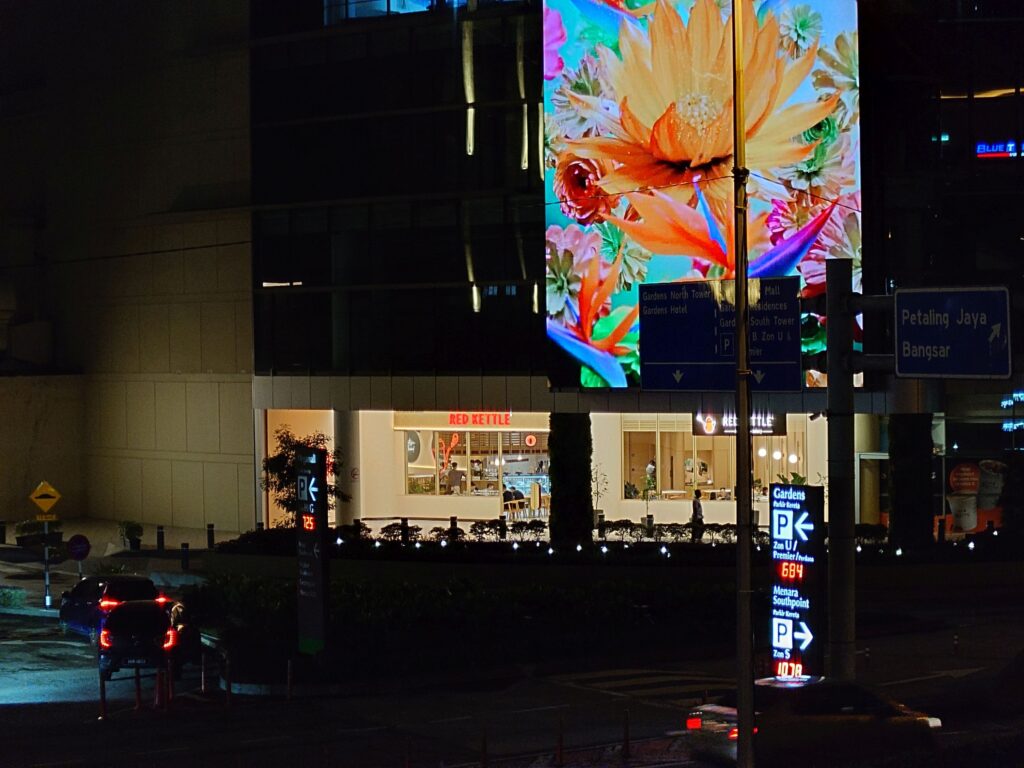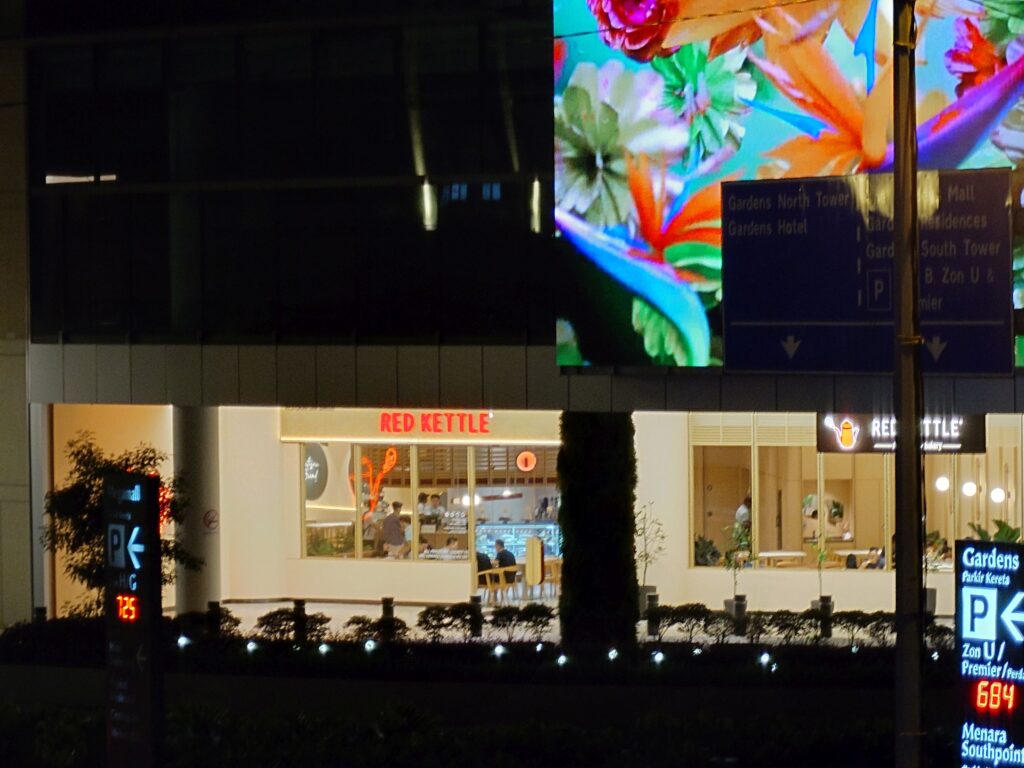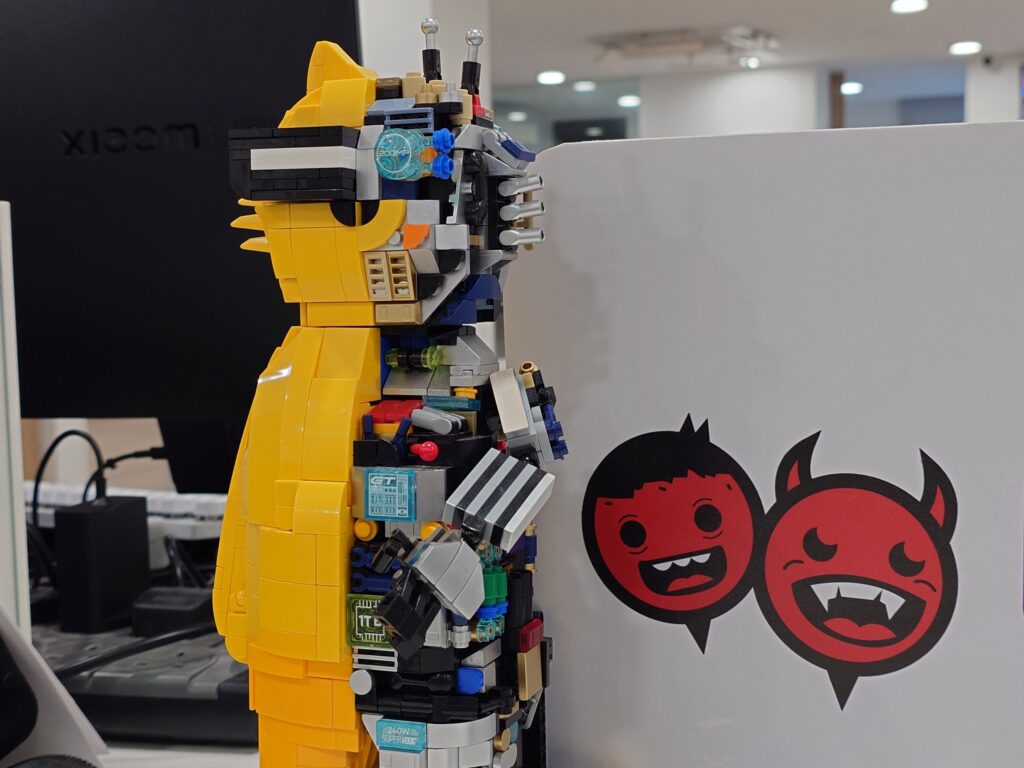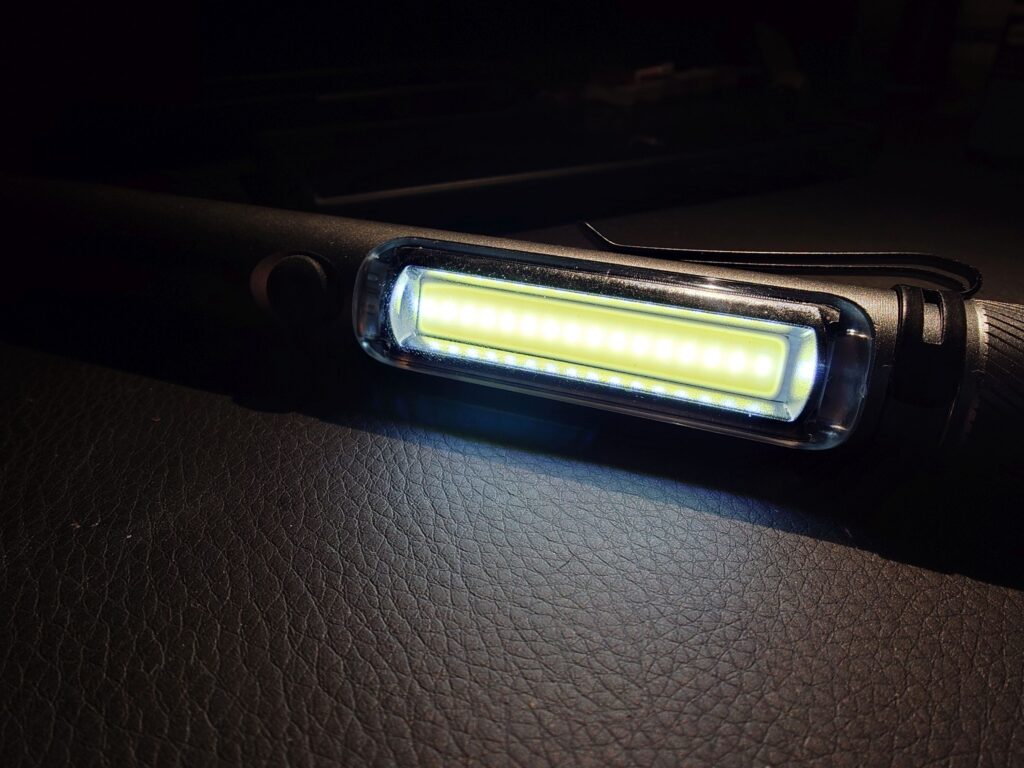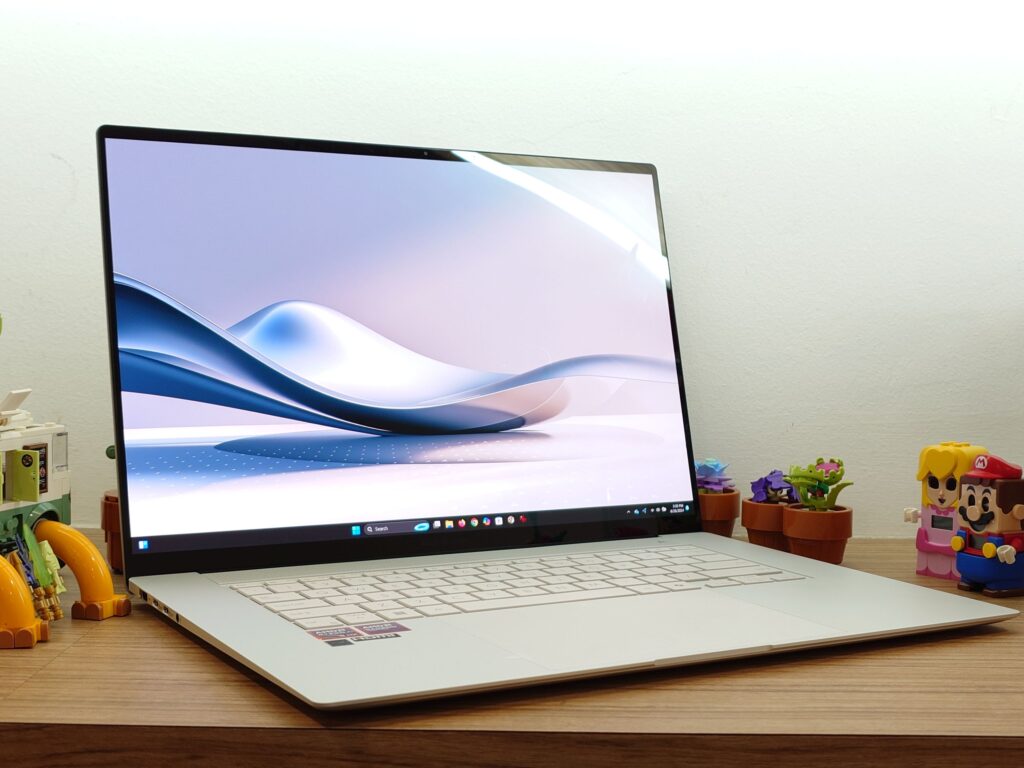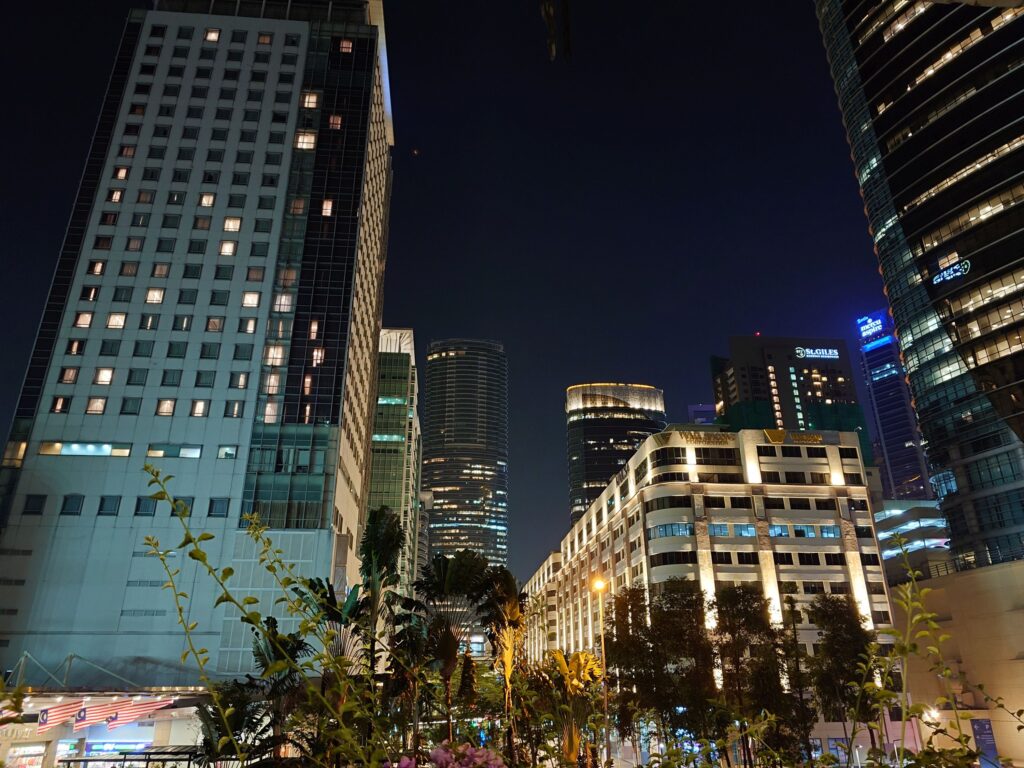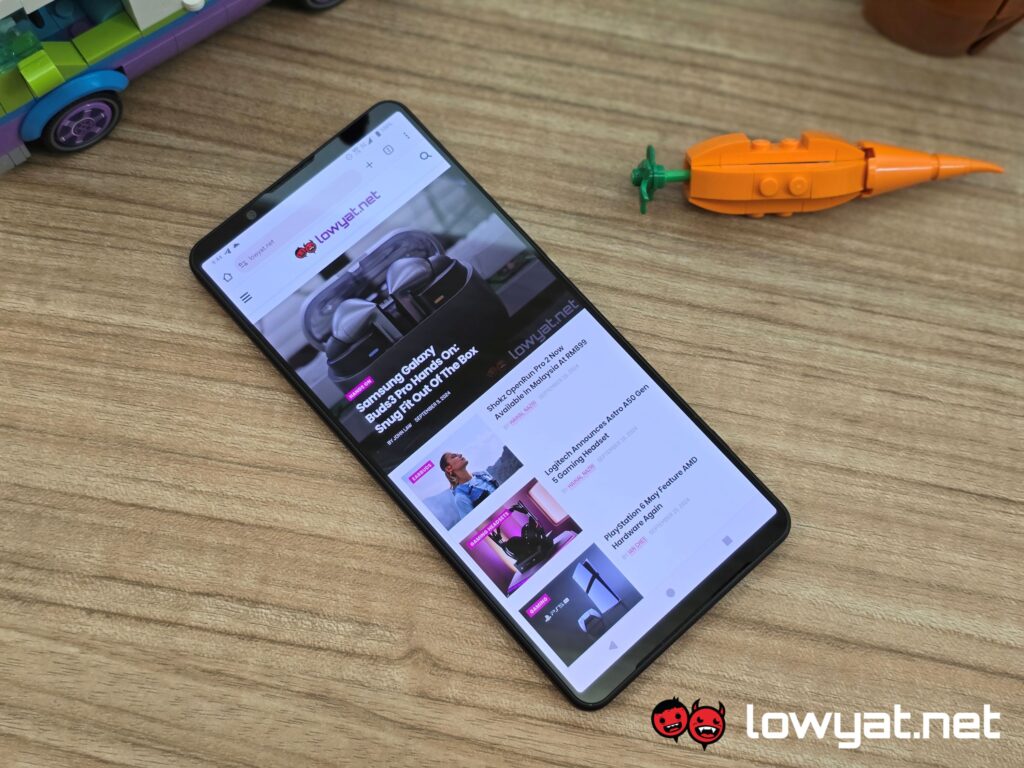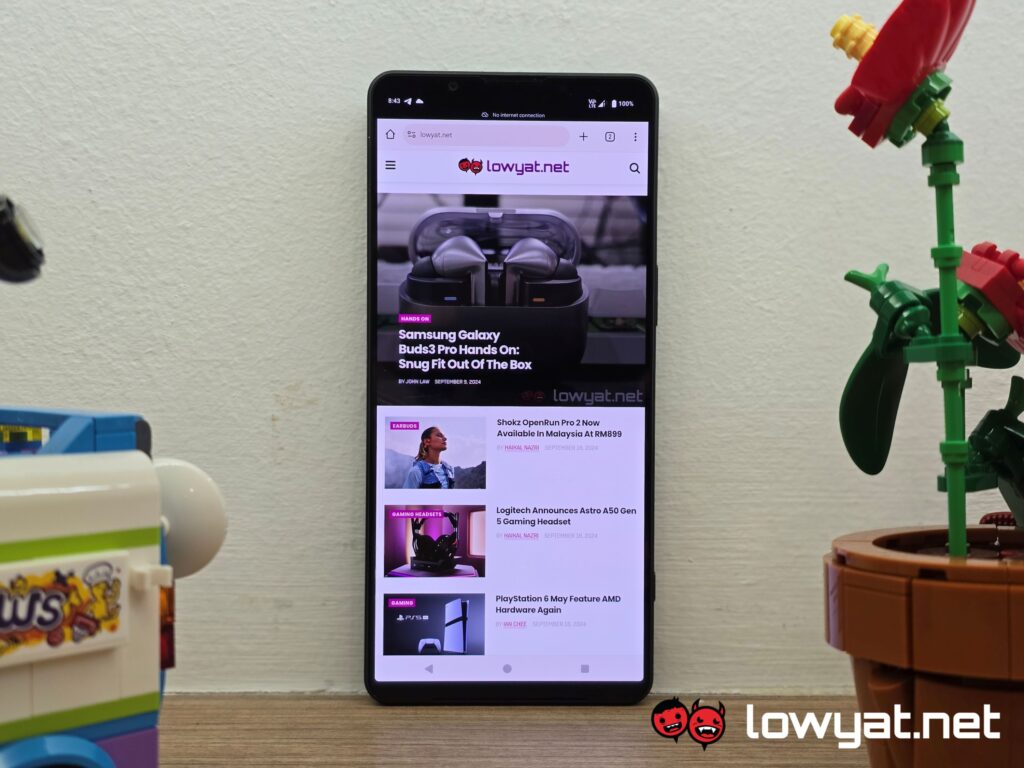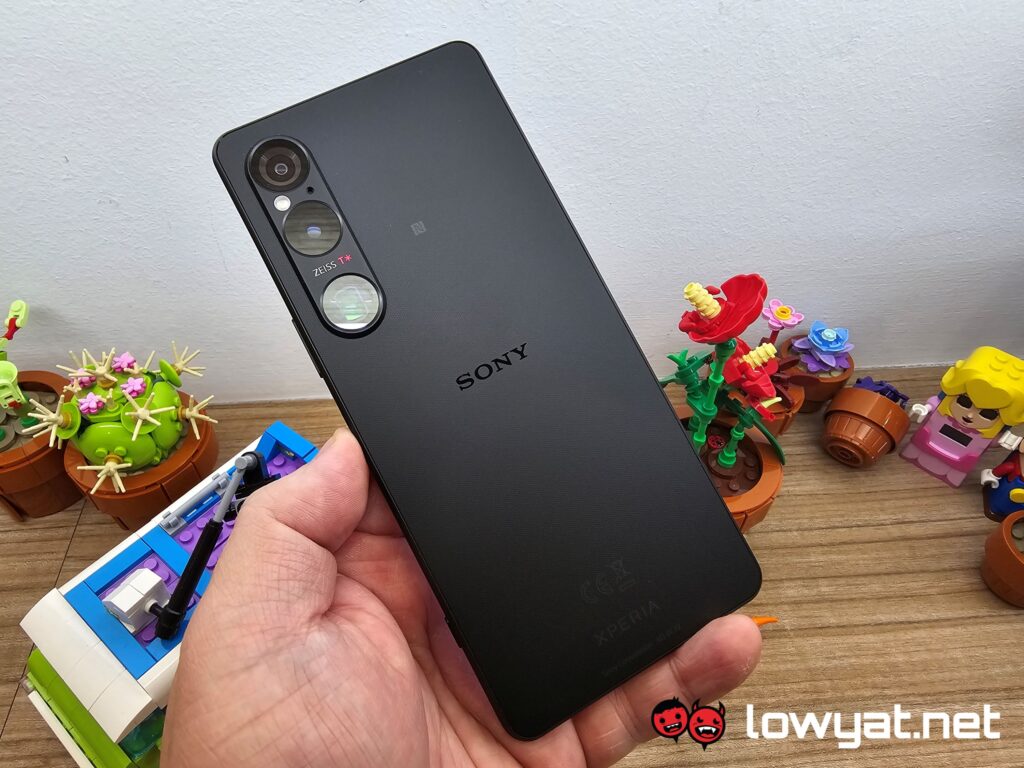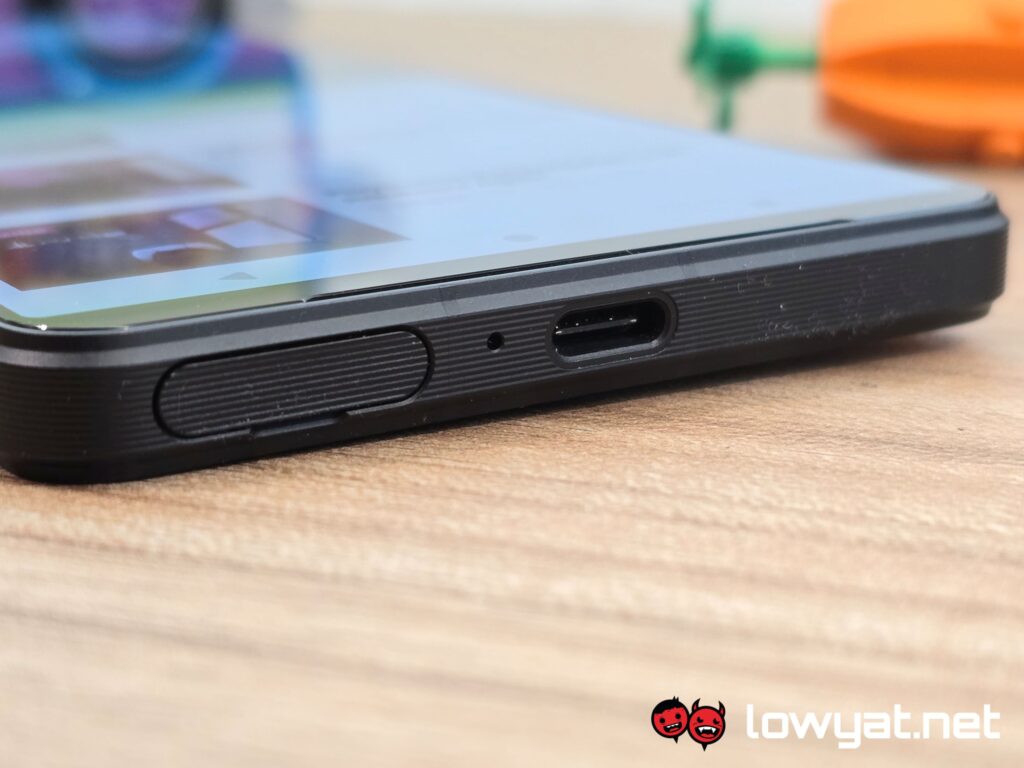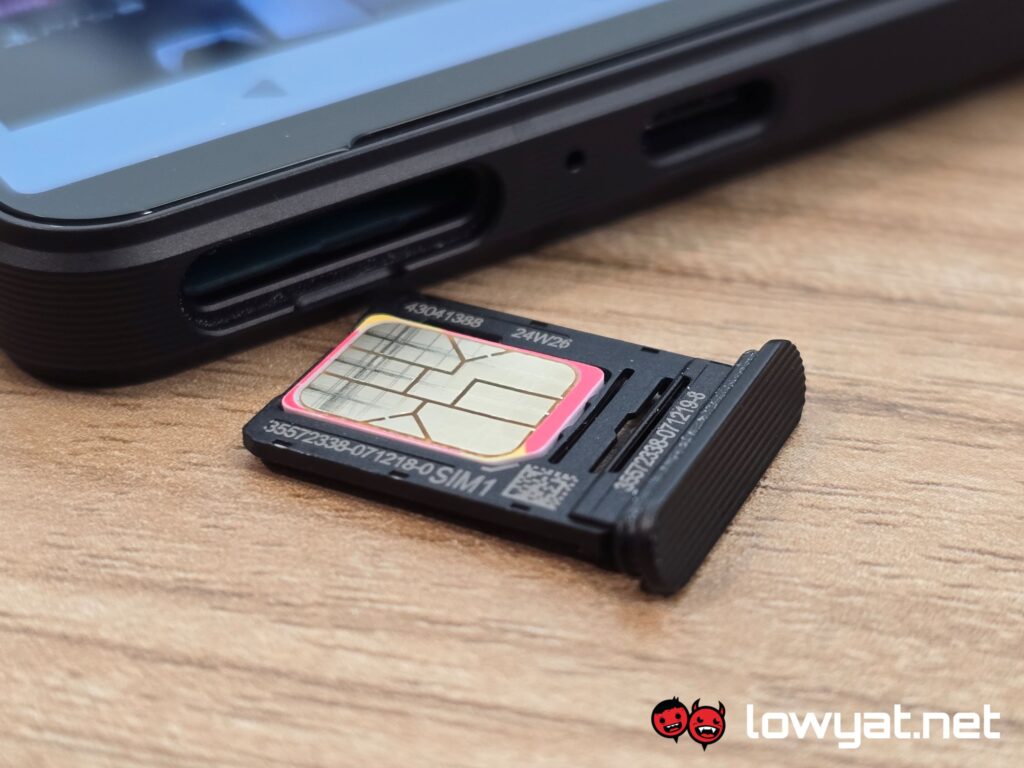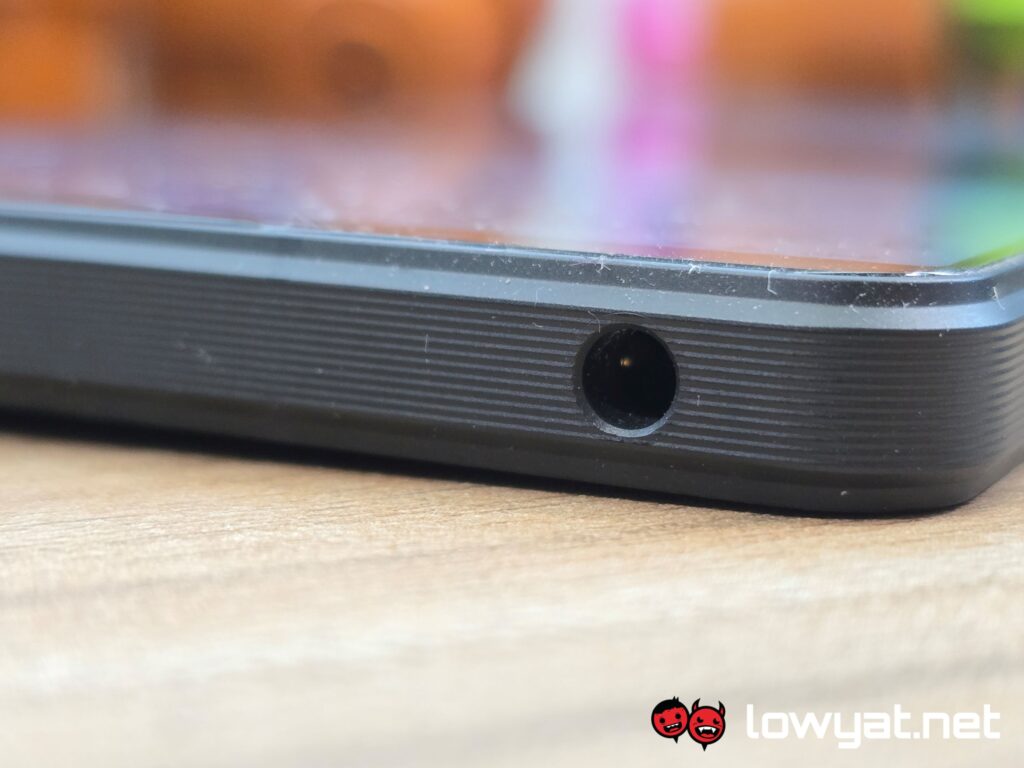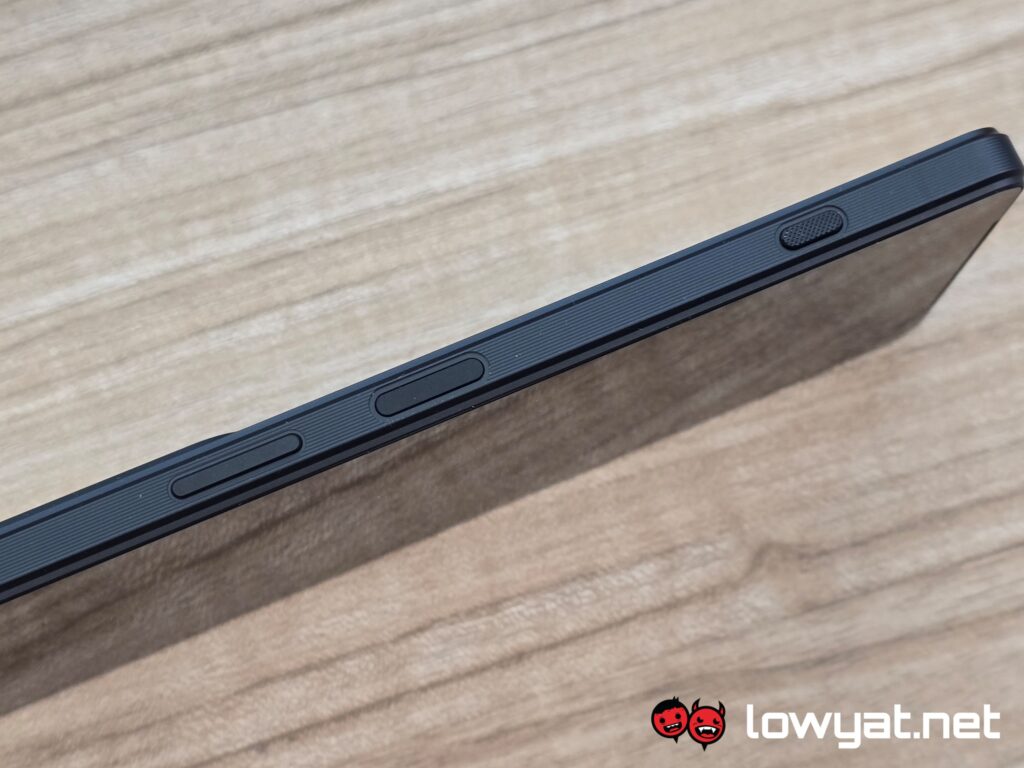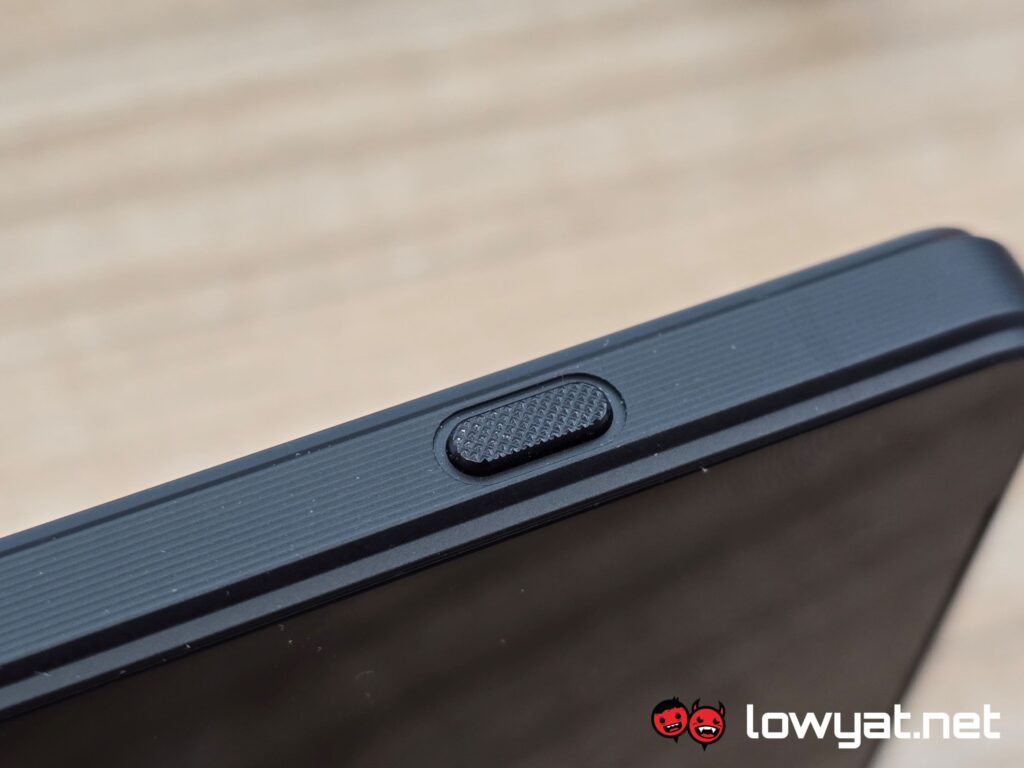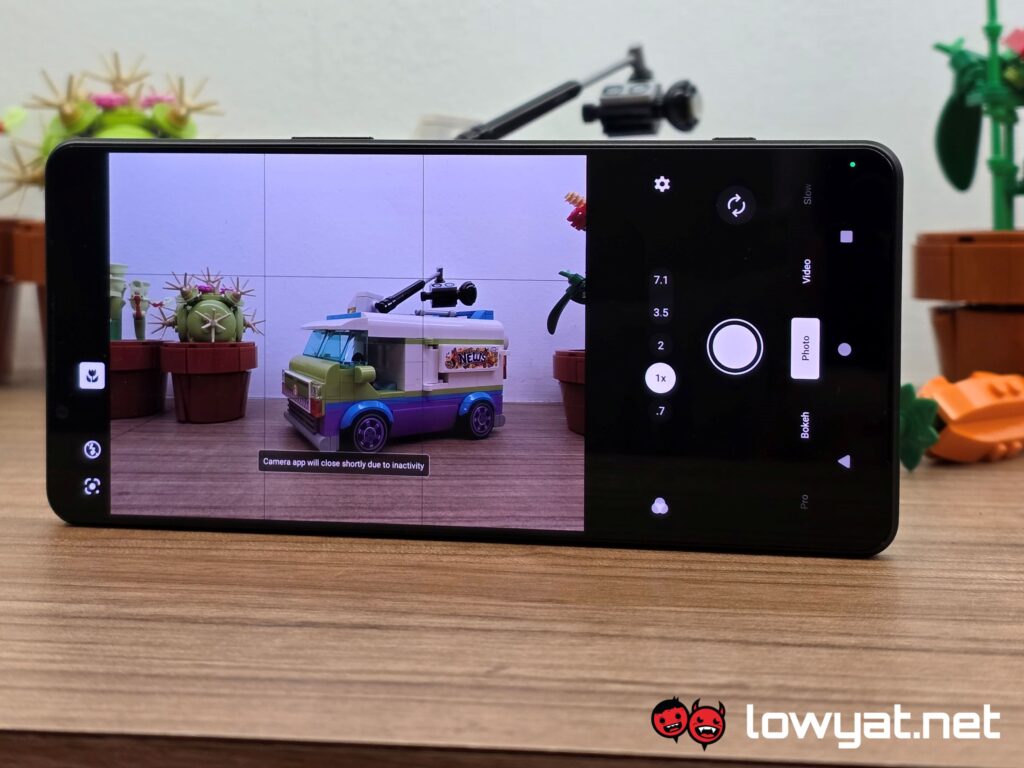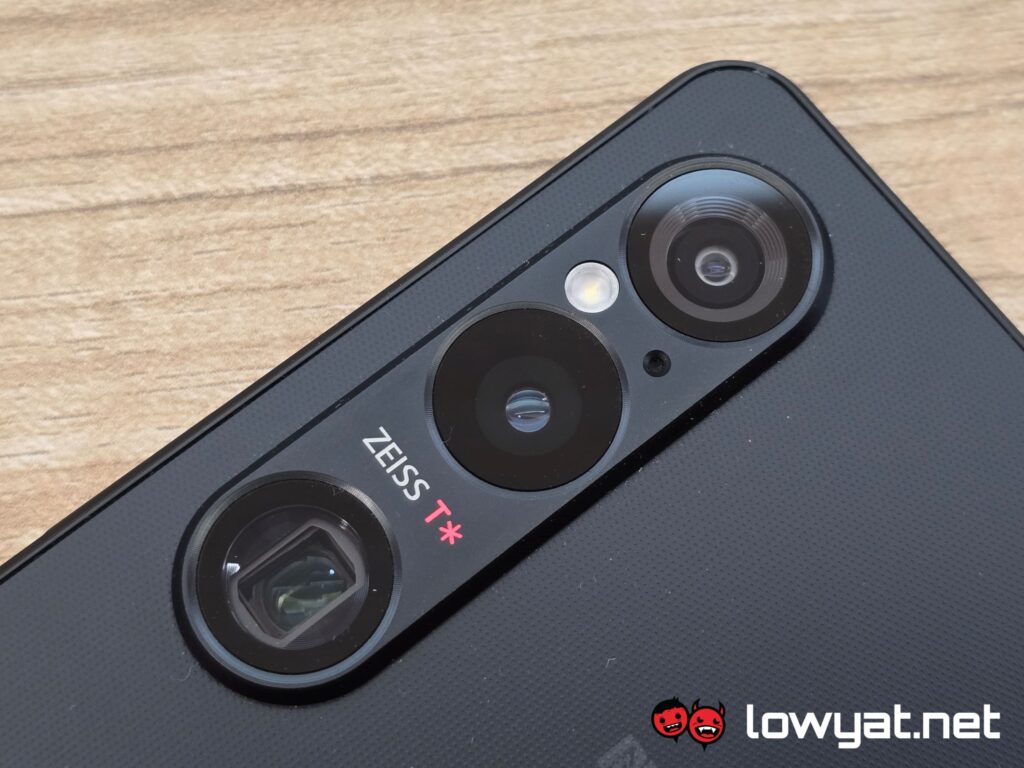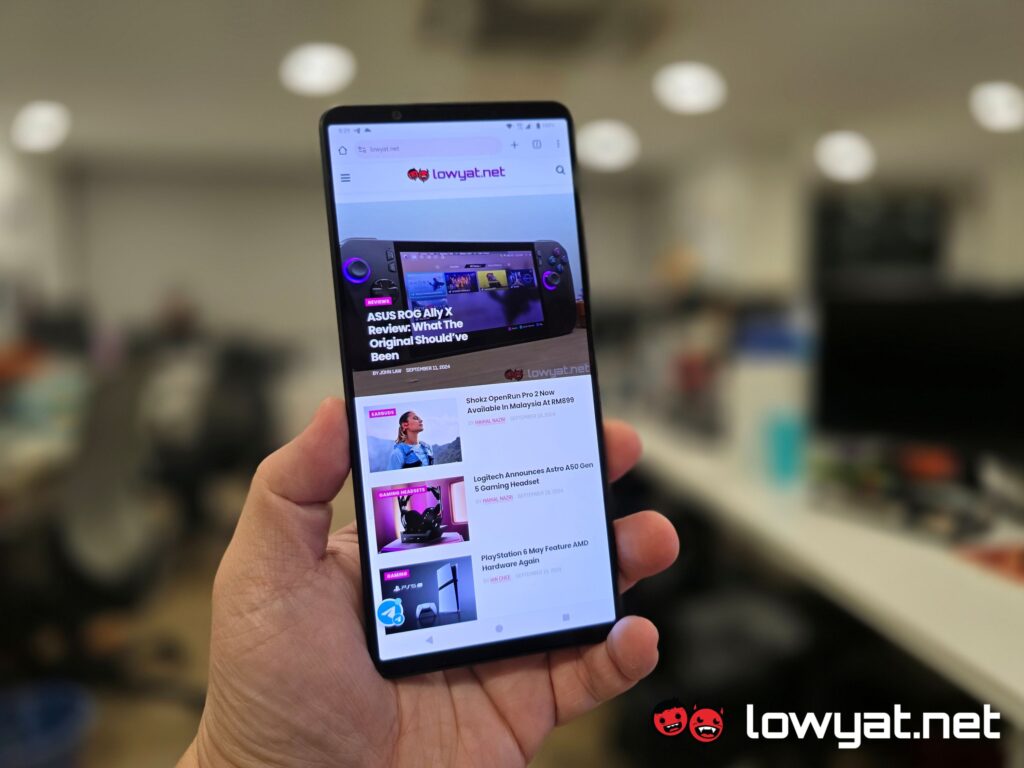Every year, since the Xperia 1 range debuted in 2019, Sony steadily made changes and improvements with each iteration. With the Xperia 1 VI, the phone marks a major departure from the slimline form factor that the brand has used for the past five years.
Specifications
Looks And Functionality
Perhaps the biggest, if not the major change to the Xperia 1 VI is that, with this generation, Sony is officially ditching the 21:9 aspect ratio and reverting back to the more common 19.5:9 layout. It is, quite honestly, a smart decision and a reversion for the better that is instantly felt in my hands. I get that Sony was trying to make the phone lineup stand out from the crowd but truth be told, it isn’t exactly a crowd-pleaser; most people simply want to watch their favourite content on the go regardless of the aspect ratio, and the ones that value the cinematic 21:9 aspect ratio, you could simply count them by hand.
On that note, it should be pointed out that 4K resolution isn’t being highlighted with the Xperia 1 VI. Instead of higher resolution, Sony is instead pushing its Bravia display technology on the OLED display, which makes a lot more sense in terms of image quality and battery life. More on that later.
One aesthetic that makes the Xperia 1 VI stand out and that I like is how the display and the rear of the phone is slightly elevated from the chassis. It really lends to the overall grip of the phone and with the ridges being ribbed, there’s little chance of my accidentally dropping the phone, although not for want of trying. It’s a design that reminds me of the Xperia Pro-I I reviewed in 2022, which was an Xperia that well and truly captivated me. Oh, and of course, the dedicated shutter button is still there and and has very obviously influenced a certain fruit company to adopt it with its latest Pro models.
Like all Xperia smartphones, this year’s 1 VI gets a 3.5mm headphone jack at the top, therefore giving audiophiles and cinephiles a dedicated wired option when it comes to consuming their media.
Performance And Battery
I’ll start this section off by talking about its overall performance. As a phone running on what can basically be considered close-to-vanilla Android, the Xperia UI is snappy and shows no lag in latency. Apps snap open in a blink of an eye, and swiping between windows, webpages, and sections is fluid and effortless. Of course, the fact that it runs on the powerhouse Snapdragon 8 Gen3 helps but at this point, that’s not really surprising.
Speaking of the 8 Gen3, the chipset clearly dominates virtually every synthetic benchmark that is thrown at it. That includes the 3DMark Steel Nomad and Wild Life tests, and PCMark10 performance test.
The OLED display on the 1 VI, coupled with Sony’s Bravia display technology and HDR means that whites are ghost sheets and blacks and deep and inky, and the colour contrast are catchy but more natural to the eye and not as punchy or saturated as Samsung Dynamic AMOLED 2X panels.
That being said, it’s not exactly the most scratch-resistant display I’ve experienced. In the time that I have used the phone as my daily driver, it’s already developed or rather, given itself some micro-scratches, although not enough to drive my anxiety levels up. Honestly, I can live with them but if you’re not ok with that, then you’ll want to get a screen protector.
Battery endurance is still breathtakingly long.
Battery life is still one of the most impressive aspects of the Xperia lineup, and the 1 VI is no exception to the rule. Whether it’s idling or being used sparingly as my day-to-day driver, I’m getting close to three days out of the phone and the best part is that, even with single-digit battery life, I don’t have to rush for the charging adapter.
On a battery life rundown, where I take a phone and loop videos or play a series with several seasons on Netflix with the brightness set at 40%, it barely breaks a sweat as it takes over 20 hours just to get from 100% to single digit battery life.
In playing the series Bridgerton, it went through the first season uninterrupted and all it consumed was 30% of power. All in all, the middle of the third season was when the phone, again, reached single-digit battery life.
Camera
I’ve already said this so many times, I’m currently in fear of sounding like a broken record: compared to Samsung’s rich and punchy colour palette on its displays, the final image seen through the lens of the 1 VI looks and feels less vibrant. In fact, it actually looks and feels a lot more natural, to the point that it feels warm.
And while it has a 48MP wide sensor, capturing images at that resolution still requires that you manually select in the camera menu. Otherwise, you’re just snapping shots at 12MP. Worse, shooting at that resolution, you have no zoom option, or any other functions for that matter. It makes for good “as is” subject photography but, as always, you need to ensure that there is ample lighting available.
The telephoto macro function on the 1 VI is an absolute delight too, adding on the ability to manually adjust the focus at near-uncomfortable distances of your subject or subjects. While it doesn’t make me want to actively look for a subject to snap as I did with the Pro-I, it certainly makes macro photography that ever more delightful.
Alas, one of the main issues with Sony Xperia smartphones is that, unlike its Galaxy S24 Ultra or Xiaomi 14 Ultra counterparts, it doesn’t utilise AI as heavily in post-processing. To be clear, this isn’t me saying that it is non-existent; as you can see in the night shots taken above, post-processing actually helped in making the “Red Kettle” sign pop out in both colour and readability. This can be a good or bad thing, depending on the individual. On one hand, this effectively forces people to really plan and prepare their shots – making sure there is ample lighting, is the subject moving, are they near or far – before they press the shutter button.
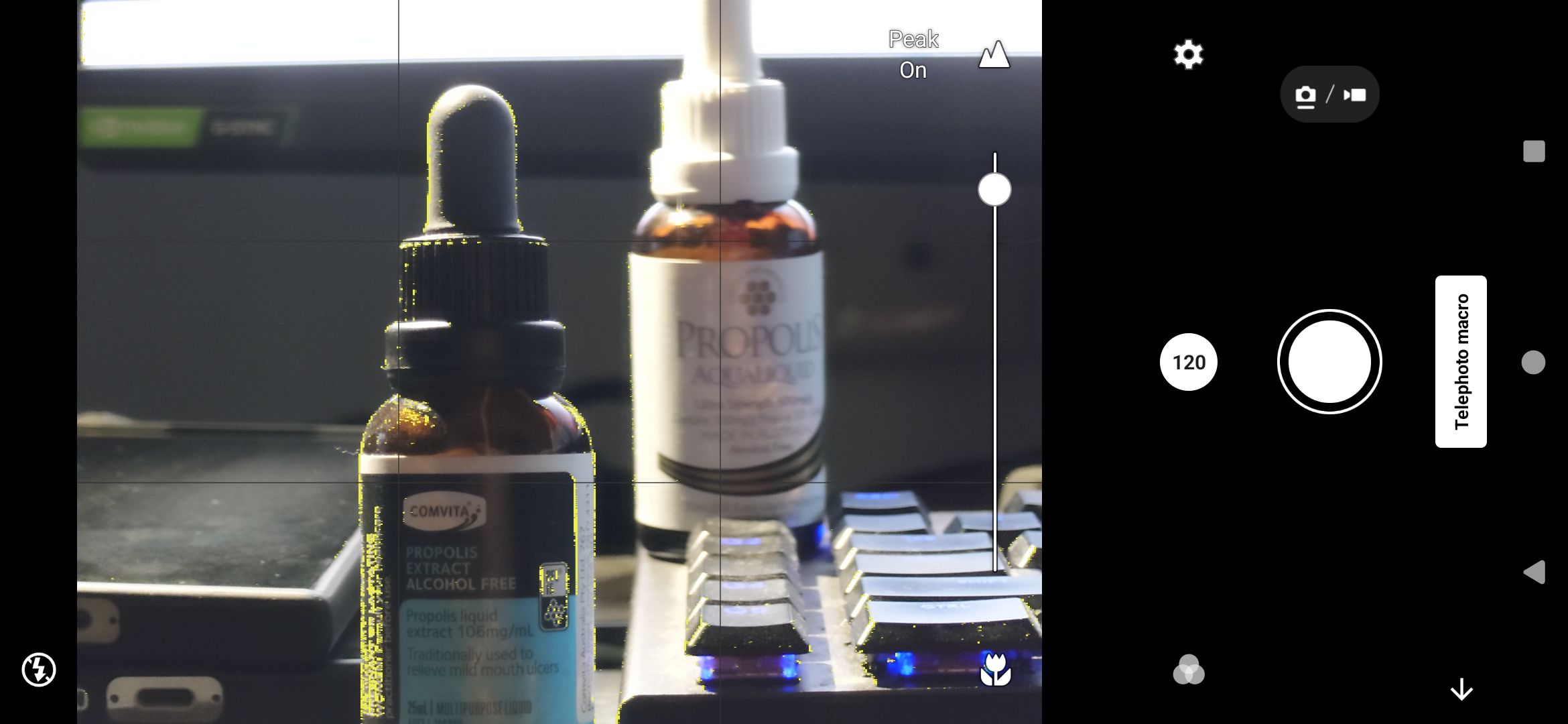 For another matter, and one I am sure many fans of the lineup would have notice is how Sony consistently changes the layout for the Photography app with each iteration of the Xperia 1. I can only speak on behalf of myself but with this year’s 1 VI, it is certainly less complicated, with Sony having taken a page out of Samsung’s and Apple’s books.
For another matter, and one I am sure many fans of the lineup would have notice is how Sony consistently changes the layout for the Photography app with each iteration of the Xperia 1. I can only speak on behalf of myself but with this year’s 1 VI, it is certainly less complicated, with Sony having taken a page out of Samsung’s and Apple’s books.
On the other hand, this could also drive away Sony’s already small pool of fans, leaving only avid and professional photographers who see the real value of having a camera phone loaded (to a degree) with its Alpha camera technology.
Sample Images
Competition
Samsung Galaxy S24 Ultra
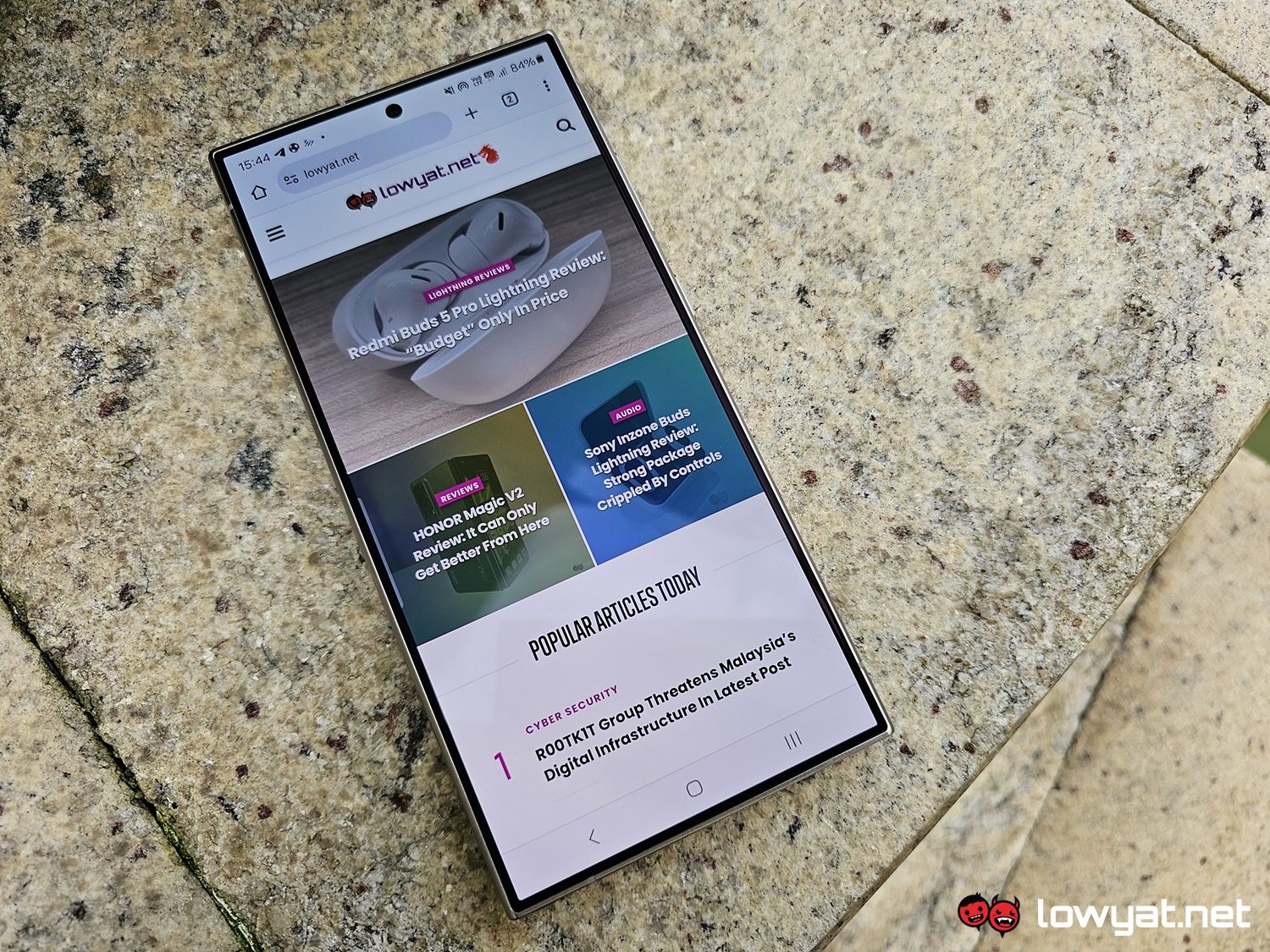 The Samsung Galaxy S24 Ultra is one of the more obvious rivals and choice to the Xperia 1 VI, and also it’s because it is technically one of the flagship Android devices to beat. Specs-wise, they both rock the same Snapdragon 8 Gen3 SoC, the same amount of RAM, but Samsung offers the phone in three different storage configurations – 256GB, 512GB, and 1TB – versus the one SKUs the Japanese electronics giant is bringing in.
The Samsung Galaxy S24 Ultra is one of the more obvious rivals and choice to the Xperia 1 VI, and also it’s because it is technically one of the flagship Android devices to beat. Specs-wise, they both rock the same Snapdragon 8 Gen3 SoC, the same amount of RAM, but Samsung offers the phone in three different storage configurations – 256GB, 512GB, and 1TB – versus the one SKUs the Japanese electronics giant is bringing in.
The S24 Ultra’s main camera, like its predecessor, is a quad-camera module comprising a 200MP wide, 50MP periscope telephoto with 5x Optical Zoom, 10MP telephoto with 3x Optical Zoom, and a 12MP ultrawide with Super Steady Video.
The only thing more breathtaking about it is the starting price: owning this phone starts from RM6,299 with the top-tier SKU costing RM7,799.
iPhone 16 Pro And Pro Max

The Apple iPhone 16 Pro and the Pro Max variant makes the cut purely by virtue of being the Cupertino company’s latest and most current flagship, even it isn’t technically readily available at the time of this publication.
At a starting price of RM4,999, you get a Super Retina XDR OLED display with 120Hz ProMotion, and depending on whether you’re going for the Pro Max or standard Pro, you get a resolution of 2868 x 1320 or 2622 x 1206 pixels, respectively.
Internally, the iPhone 16 Pro lineup is powered by the 3nm A18 Pro. Camera-wise, the phone’s triple-camera module now comprises two 48MP sensors for wide and ultrawide, while the third is now a 12MP with 5x optical zoom via Apple’s Tetraprism technology. Of course, and as mentioned earlier in the article, there’s the new dedicated Camera Control button that provides access to various camera functions through different forms of inputs, no doubt inspired by the Xperia 1 lineup, let alone the 1 VI.
Conclusion
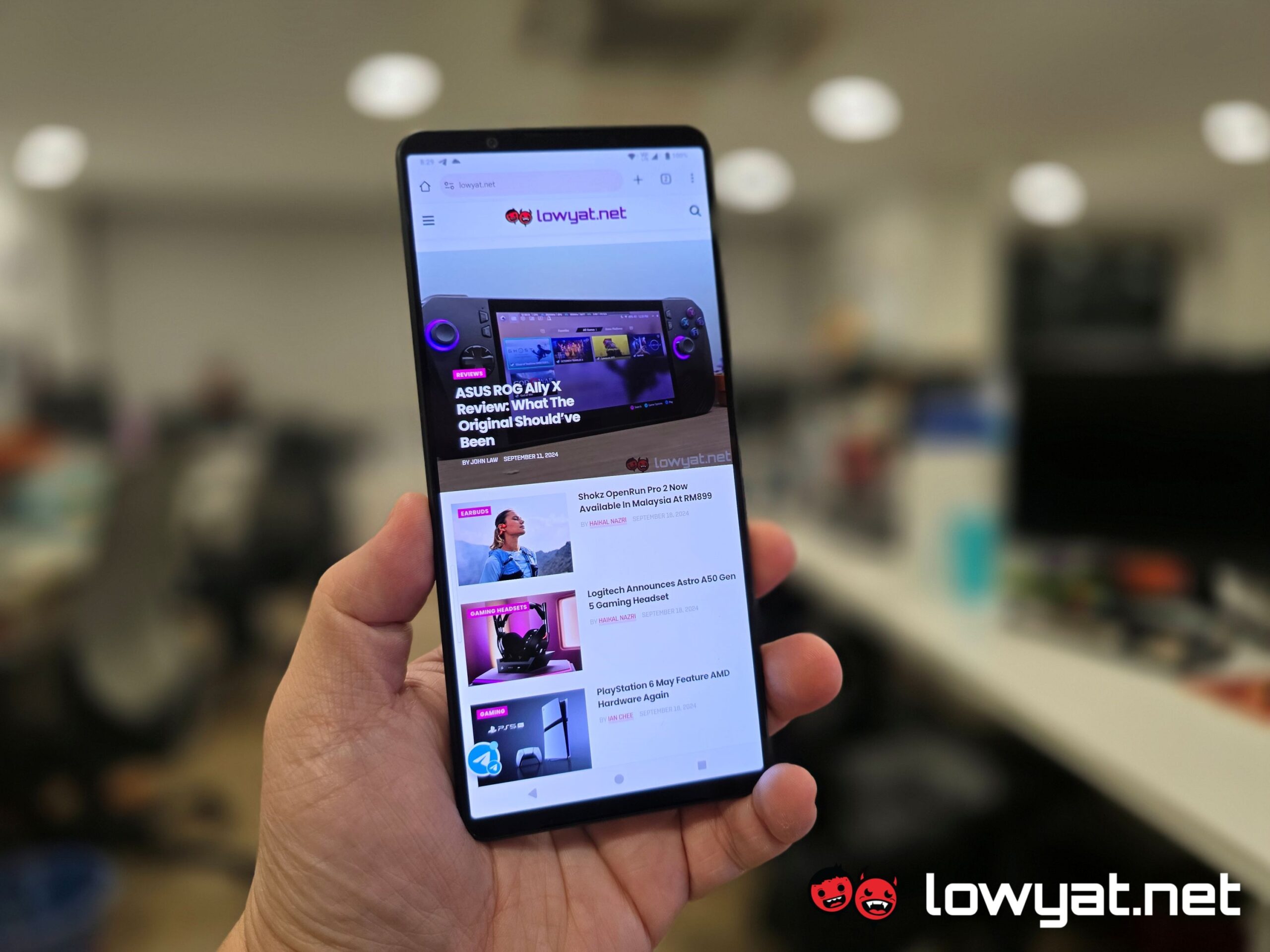 Much like its predecessor, the Sony Xperia 1 VI can and does boast some impressive hardware, particularly in the camera department. The fact that it is no longer a slimmer-than-average device is, at least in my books, a massive plus point and a welcome departure that allows it to join the fold of other candy bar flagship smartphones.
Much like its predecessor, the Sony Xperia 1 VI can and does boast some impressive hardware, particularly in the camera department. The fact that it is no longer a slimmer-than-average device is, at least in my books, a massive plus point and a welcome departure that allows it to join the fold of other candy bar flagship smartphones.
And while its asking price of RM6,499 is no less steep, I feel the phone makes up for it by offering potential owners of the phone a solid mobile photography experience, battery life that runs rings around most other flagships, access to certain creature comforts like Google Walley, and the ability to expand your storage via microSD card if needed.
The only other thing I wish Sony would have at least changed – this really is just a minor niggle but one I think would still benefit the overall sale of the phone – is to include a USB-C charging cable. I mean, it’s one thing if they don’t want to provide a charging adapter but come on, a charging cable isn’t too much to ask for.
Photography by John Law.
Follow us on Instagram, Facebook, Twitter or Telegram for more updates and breaking news.


